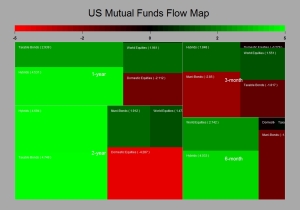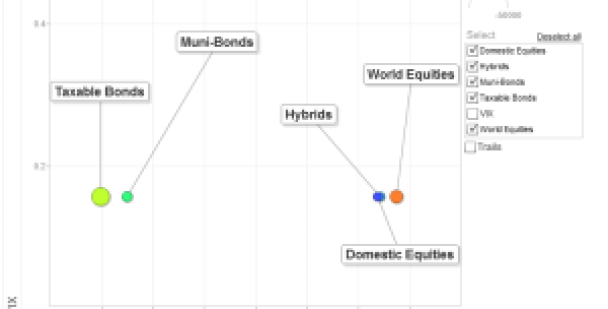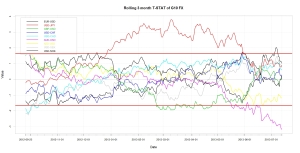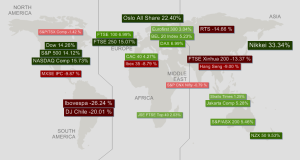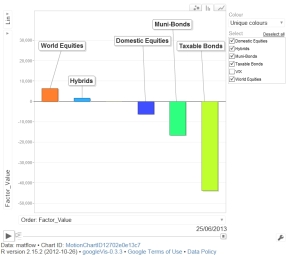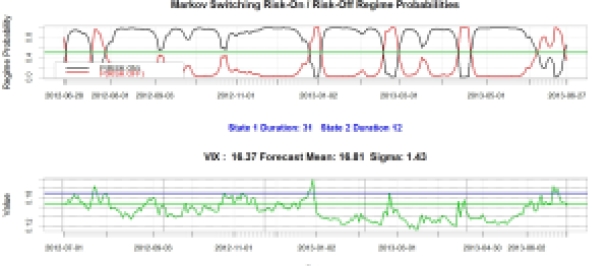I spent a few hours yesterday reacquainting myself with the academic view at the Imperial College first annual Foreign Exchange Conference. Most of the papers presented there were focussing on carry and crash risk. The change of market regime observed over the last five years proved irresistible to the academically minded. Surprisingly no talk about momentum strategies …till one in the audience popped the question to a panel of illustrious bank economists at the very end of the conference. Those generally presented a gloomy view of the potential of momentum strategies in generating alpha out of foreign exchange in the current environment. The supporting argument was that the markets had become somehow quicker at translating information and that therefore fewer potential for inefficiency remained. I guess it would be difficult to argue against the fact that markets have become more integrated over the years. This is obviously due to the advance of communication and transactional technology. Also economies have become generally more open therefore facilitating capital flows. A good way to visualise this is to look at a map of the Globalisation Index compiled by the KOF. The Globalisation index relies on various metric of economic, social, technological, cultural, political, and ecological data to tell us how integrated and globalised the world is. From the two charts below you can see that world is somehow more integrated than what it was 40 years ago.
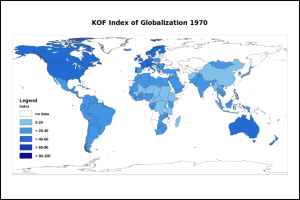
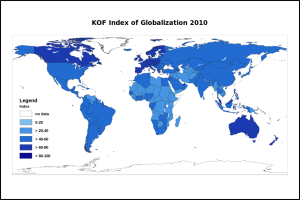
Following this I thought that it would make sense to look at how the FX markets have behaved in terms of inefficiency over the long term. I did this by classifying the statistical behaviour of 45 exchange rates derived from the G10 US$ exchange rates. To classify them I looked at the 95% significance level of the first autocorrelation and of the drift over a rolling window of 250 daily logarithmic returns over the period January 1971 to 2013. I created different bins which I then aggregated under three sub categories, namely Trend, Mean-Reverting and Random. the Bins are defined as in the following:

Over the whole sample the results shows that the 45 exchange rates have been on average random 64 % of the time, mean reverting 20 % of the time and trending 16 % of the time. This means that most of the time it has been very difficult to forecast currencies but that there has been some opportunities to deliver value. What is less encouraging is that the Random behaviour as surged as time went. If we look at the classification over the last 5 years of data it is: 84% random, 9 % mean reverting and 7 % trending.
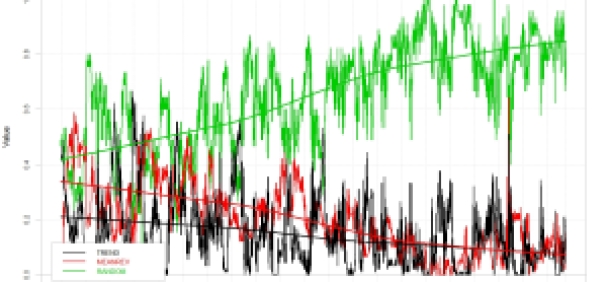 Obviously in this analysis the membership of one currency can change from one period to another and therefore support the argument for more shorter term opportunities. Also true enough in my definition of random ( no significant drift or autocorrelation) one could generate returns if the market risk premia is low and the interest rate spread is high…..clearly this has not been the case over recent time, market risk as been volatile and spreads have tightened due to the ultra loose monetary policy lead by central banks. On the topic of momentum the results delivered by the AFX a naïve momentum strategies which was designed in 1996 has been resilient and delivered some degree of positive returns though this as arguably diminished toward zero over the last 5 years.
Obviously in this analysis the membership of one currency can change from one period to another and therefore support the argument for more shorter term opportunities. Also true enough in my definition of random ( no significant drift or autocorrelation) one could generate returns if the market risk premia is low and the interest rate spread is high…..clearly this has not been the case over recent time, market risk as been volatile and spreads have tightened due to the ultra loose monetary policy lead by central banks. On the topic of momentum the results delivered by the AFX a naïve momentum strategies which was designed in 1996 has been resilient and delivered some degree of positive returns though this as arguably diminished toward zero over the last 5 years.

This may explain in part why active currency managers have had a tough time over the last few years. So are FX market becoming more efficient ? yes certainly ! Does this means the end of systematic trading or active management as a whole? no certainly not ! Clearly there are some opportunities for profits in foreign exchange to generate value. The recent move in the USDJPY and other Yen crosses is a good illustration of this. Also it is likely that central banks will look forward to adjust their monetary policies as the global economy recover. This will create further opportunities in both the carry and momentum space as spread will widen and currency become more directional when interest rates changes. However I think that for an investment process to capture those opportunities greater time and effort will need to be spent R&D on the subject of dynamic style allocation and risk budgeting. Meanwhile other managers relying purely on one specific style will slowly but surely disappear….Dynamic Multifactor Models will remain the essence of good alpha…..

